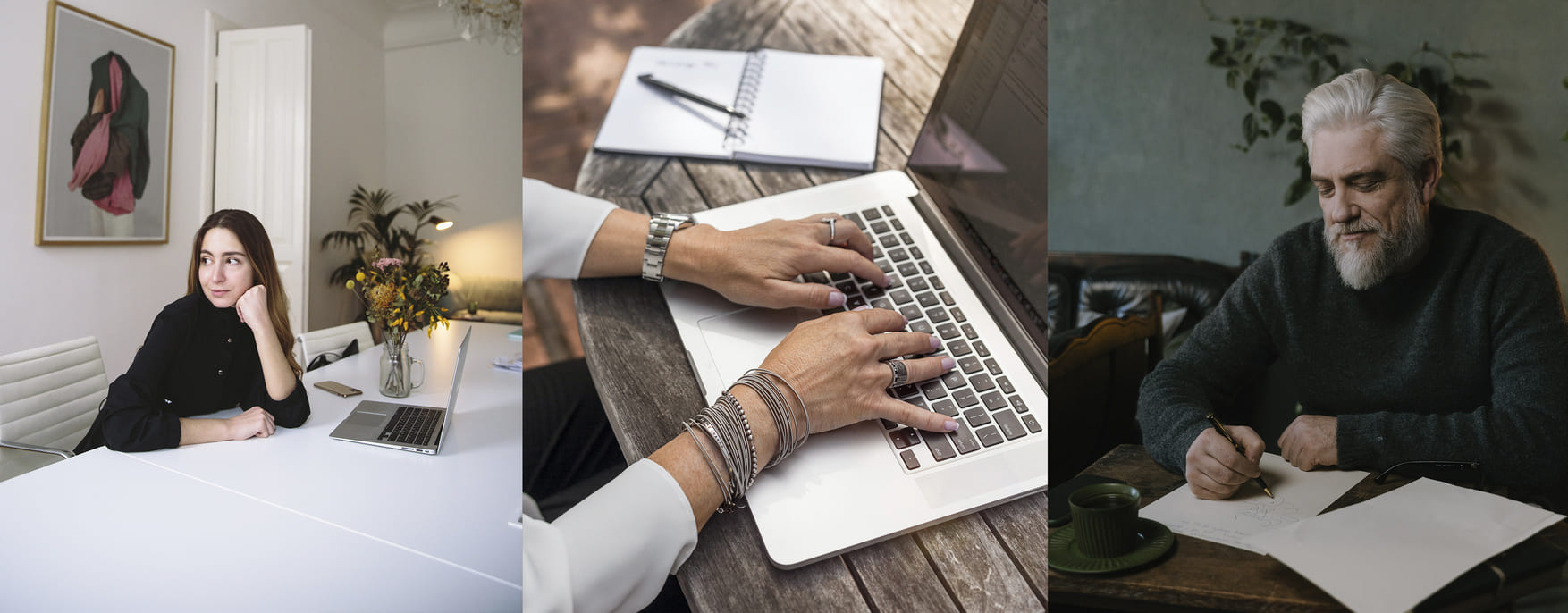If you are looking to create a strong bond with your audience as an artist or an art business, one key aspect is developing your personal story beyond the canvas. People do not only invest in the creator, they invest in who they are, what they do, what they create, and personal reflections that are compelling and attractive.
A blog is the perfect way for artists and art businesses to expand their narrative, get their artwork in front of more people, increase their visibility, and network, and even create more opportunities related to art sales and commissions.
If you want to start your own blog or improve the one you have, keep reading!
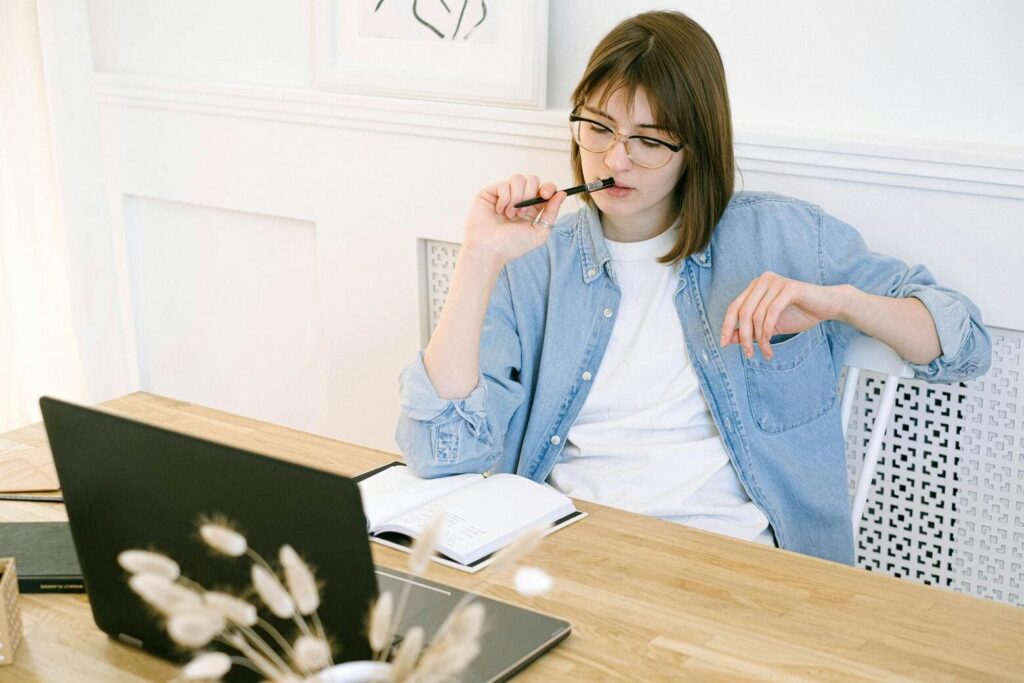
Contents
What is an art or art business blog
In its most simple definition, a blog is an online platform where a person regularly posts an array of content. Yes, it mostly relies on text, but in order to create a more engaging narrative that keeps readers more time on the page, assets like images, videos, and even audio, are used.
With this idea in mind, we can start building the concept of what an “art blog” or an “artist blog” is and how it differs from others. First, for artists or art businesses, their blog is usually a page hosted inside their professional website. Second, this page is usually arranged in reverse chronological order, showcasing the most recent post first.
And for the third part, what defines an art or artist’s blog is the content. In this day and age, we all have heard the phrase “content is king”, what we create is the most valuable asset we have, and there is no exception when it comes to blogging.
An art blog can cover everything from the history of art, types of techniques, tutorials, the creative process, discussions, and dissertations about the impact of art on society, art world news, and even more personal entries about the artist or creator.
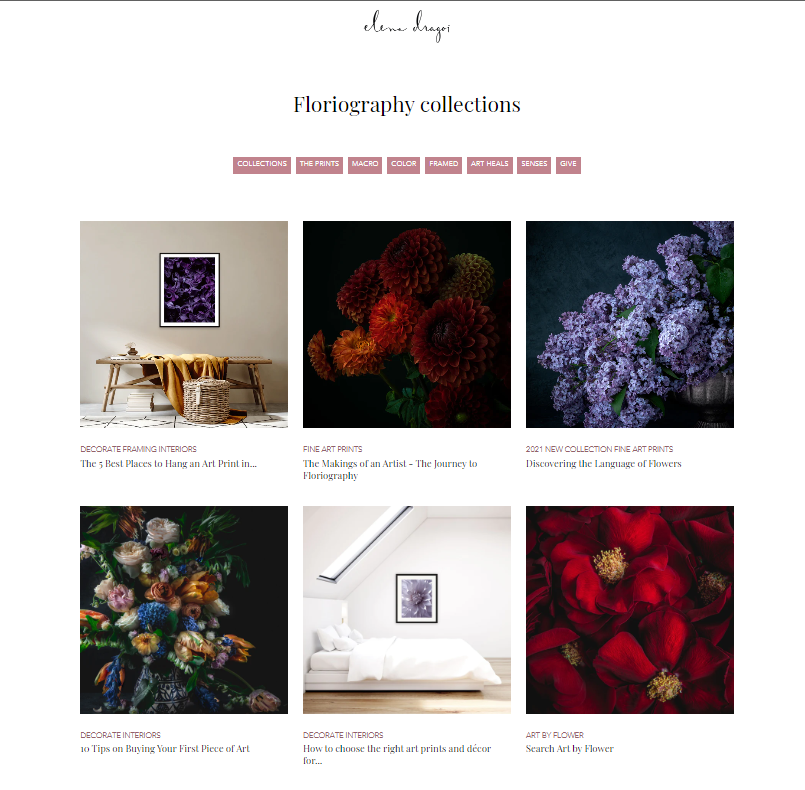
Benefits of having a blog as an artist or art business
Having your own art blog can be an extension of your creative process, a new space to inhabit as a creative, sharing your ideas, views, and overall message. When it comes to art marketing, this is also a strategic move to strengthen your brand and gain more visibility, making it easier to get your art noticed online.
Here’s a full list of both creative and business benefits of starting your own blog:
-A blog can create an additional stream of visits and views to your work and your website.
-By applying SEO or Search Engine Optimization, you will improve your art writing skills, and also make your website easier to find by search engines and people looking for related or similar content
-A blog can boost the average time a person spends on your website by engaging them in an interesting read.
–Interlinking inside your blog post can improve the navigability of your website and drive visitors to the most important pages like your art e-commerce page.
-Add or habilitate social sharing buttons: allowing people to share quotes and fragments of your blog so you can gain more traction on social media.
-A blog can help you build a name as an industry expert inside your art niche by giving you the full chance to explore different subjects and share your views and expertise.
-A blog can open the door to networking opportunities by getting your work in front of the right people.
-Create social proof of the impact of your work: you can share news, upcoming events like online or in situ art shows, mentions on different media outlets, reviews by past art buyers, and more.
-A blog can be a great excuse to engage with your audience and grow your mailing list for a more effective email marketing campaign.
-One entry at a time, a blog can help you reach your target audience with relevant content that resonates with them strengthening your brand’s perception through storytelling.
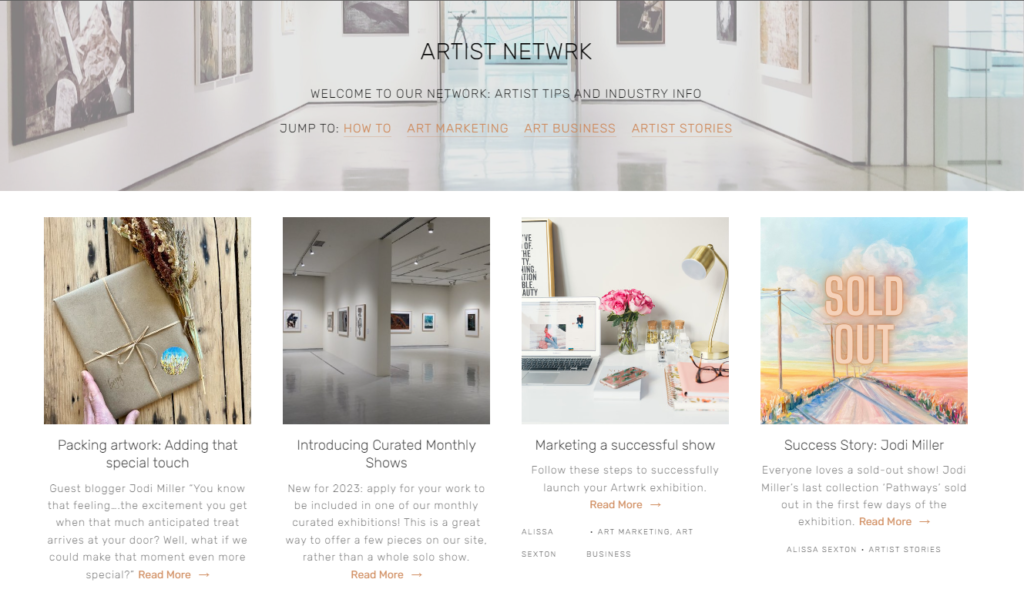
What should I write about? How to start your own art blog
Your blog is a window into your world, you can take it in any direction and cover any theme that resonates with you and your branding. See it as a new medium where you can capture different subjects and start conversations about things that matter to you.
For example, if you are a photographer who does landscape photography in Cape Cod, you can blog about your experience capturing these local views, the environmental issues that surround them, the creative aspects of your work, and even the personal journey that drove you to that particular genre and subject.
Here’s a full list of ideas of what your blog can be and concepts you can develop in your posts:
-A personal journal where you share your experiences as a creator or an art entrepreneur who is building their business.
-You can share your expertise with tutorials about different art skills helping others to improve their drawing and painting techniques.
-Open a window into your creative process and narrate how an artwork or a collection came to be. You can further engage visitors by showcasing the mentioned pieces in a Room Mockup.
-Share insider advice on how to navigate the art world like how to break free from the trap of perfectionism or how to sell art as an independent artist.
-As a gallerist or gallery, you can blog about your next shows, open calls, selecting processes, and even the extension of the work of a modern gallery.
-Share your experimentation process with trending mediums like analog photography or digital art.
-Engage with your audience and visitors to your art shows by sharing the behind-the-scenes of the curatorial process and even how you set it up.
-A blog post is also a good way to promote your online exhibitions and drive more traffic to your digital art shows.
-Share past experiences with collectors and art buyers and open up more opportunities for commissions.
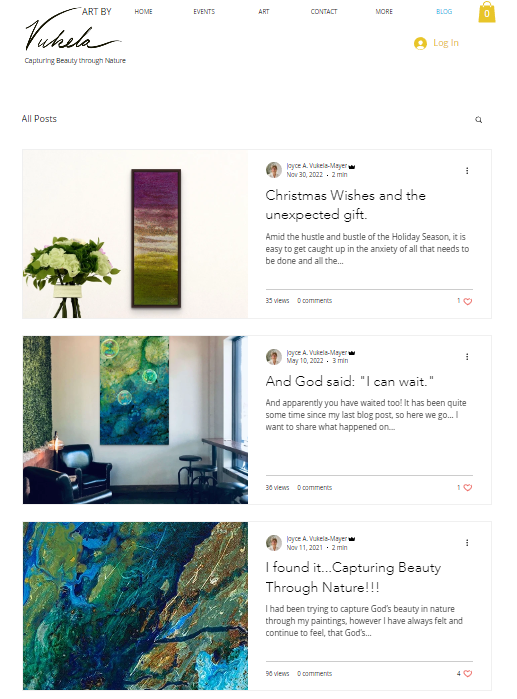
While there is a long list of benefits to having your own blog, some artists and creators might hesitate to take this leap. Here artist Joyce Vukela-Mayer shares her view and experience creating her personal blog:
“As a typical artist who wants to focus on creating art, I did not think I had much to say that others would find worth reading. Family and friends felt otherwise and told me that I needed to encourage others by telling my story. Don’t overlook this opportunity. People want to understand the heart of the artist in addition to the art.”
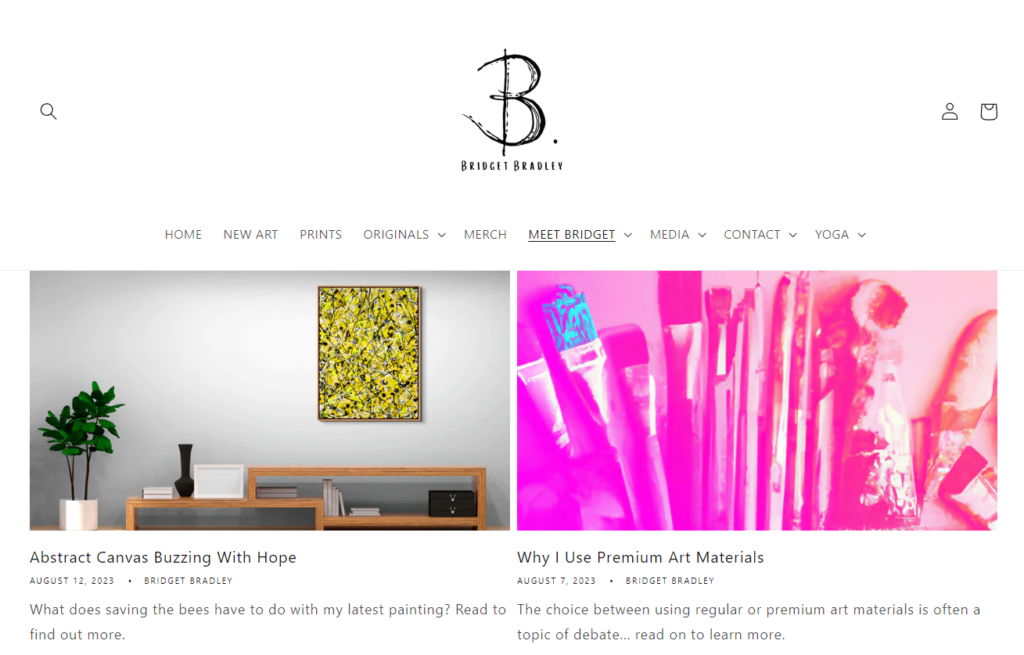
Make them read: how to set up your artist or art business blog for success
Once you have defined a concept for your blog and have drafted some ideas for new entries, it is time to get working and get writing. Here are some ideas to ensure the success of your art or art business blog:
-Get inspired: break free from writer’s block by doing research on the topic you want to write about, take a look at what others are saying, and come up with a creative take on the subject.
-Pick an attractive blog title that’s a maximum of 60 characters long. Make sure it has the main keyword related to the topic to increase the chances of ranking higher on search engine result pages. AI tools like ChatGPT can help you with this task.
-Aim for an ideal blog post length between 1500 and 2500 words.
-Break down the content into sections that start with a compelling subtitle that also showcases the main keyword or synonyms to it.
-Make your content easy to read: approach your ideas in one paragraph of 100 words or 4 to 5 lines at a time. Use lists and bullet points to cover several related items in an easy-to-skim and scroll format.
-Enrich your text with this list of adjectives used to talk about art.
-Exquisite Room Mockups of your artworks or even capture of your Virtual Exhibitions can work as both your blog header and inner visual assets. Make sure each image is SEO optimized with a file name that describes what we are seeing, for example: colorful abstract artwork.jpg.
-Write a good meta description for each blog post. A meta description should highlight the keywords people use to find similar content and provide visitors with a clear view of what they are going to read and what actions they can take afterward.
-Once you have your blog ready and published: let your audience know! Share it in your next artist or art business newsletter with a direct link to the publication.
-Make some noise on social media: you can share a quote from your blog post or a capture on an Instagram post or story, and link it back to your page driving more traffic to this new entry.
Now that you know how much a blog can help you get your art noticed, and how you can start your own series of publications, it is time to put that knowledge to work by working on your next blog post!
